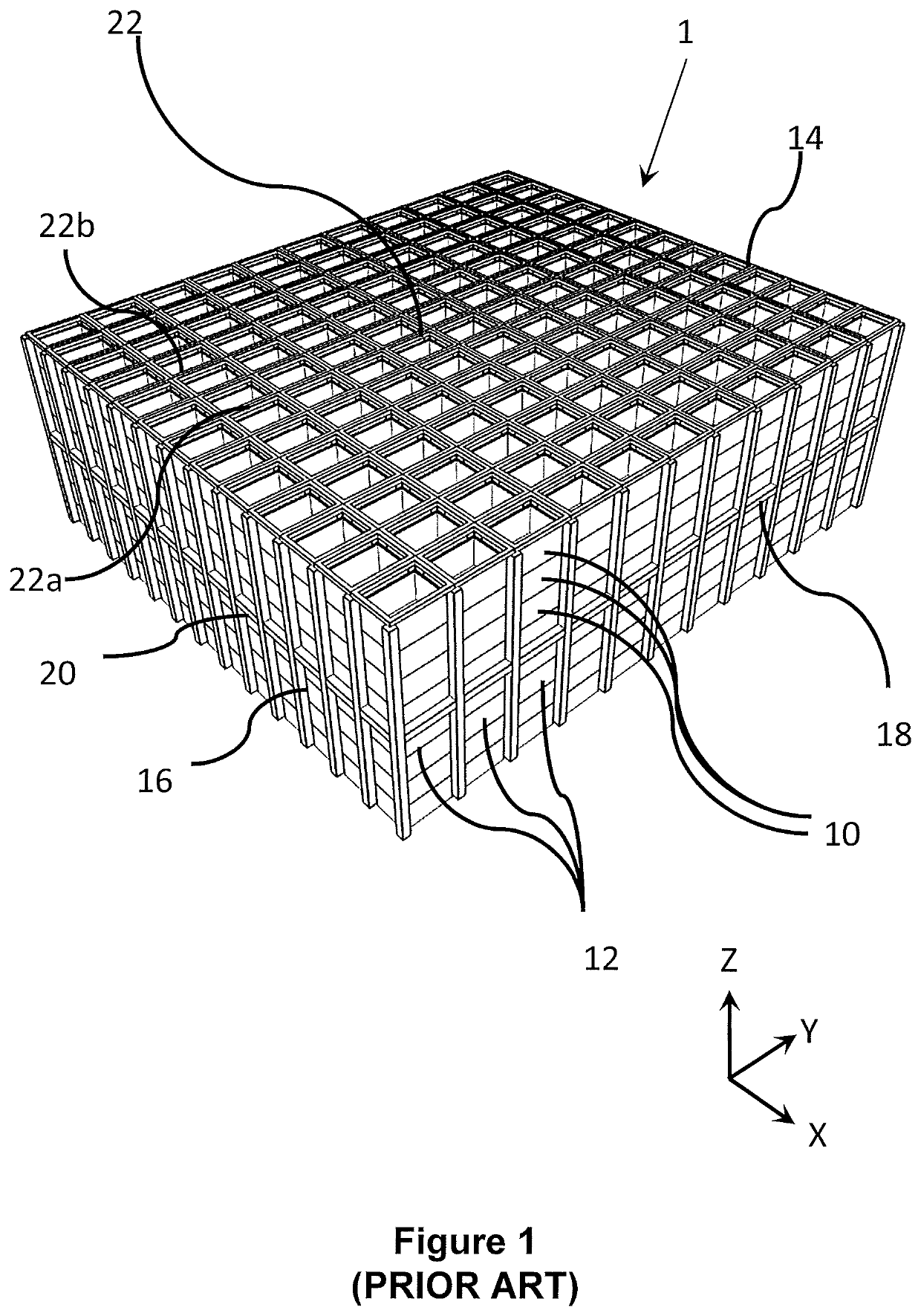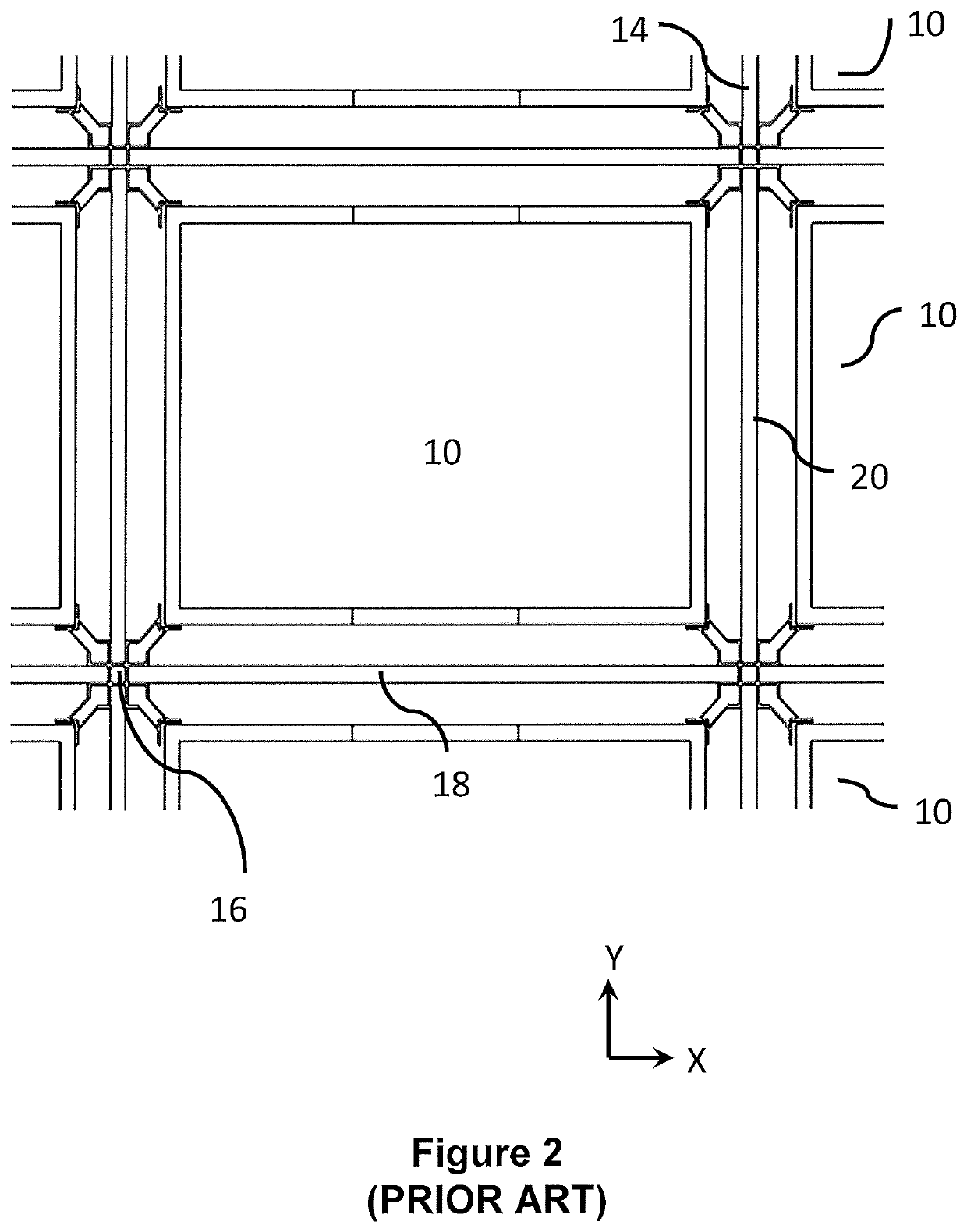Object storage, handling, and retrieving system and method
a technology for retrieving systems and objects, applied in the field of object storage, handling and retrieving systems and methods, can solve the problems of impracticality of such systems, low storage density of such systems, and congestion among load handlers on the top of the grid, so as to reduce the impact of congestion on load handling devices
- Summary
- Abstract
- Description
- Claims
- Application Information
AI Technical Summary
Benefits of technology
Problems solved by technology
Method used
Image
Examples
first embodiment
[0076]FIG. 5a is a perspective view of a sequencing and storage portion of an object handling, storage and retrieval system 100 according to the present invention. The storage system 100 is generally similar to the known system described above with reference to FIGS. 1 to 4, and comprises a plurality of storage containers or bins 10 stacked on top of one another to form a plurality of stacks 12. The stacks 12 are arranged within a frame structure 14.
[0077]The frame structure 14 comprises a plurality of upright members 16 that extend in the Z direction and support horizontal members 18, 20. A first set of parallel horizontal members 18, arranged in the X direction, is disposed perpendicular to a second set of parallel horizontal members 20 (not shown in FIG. 5), arranged in the Y direction. The horizontal members 18, 20 form a plurality of horizontal grid structures supported by the upright members 16. The bins 10 are stacked between the members 16, 18, 20 of the frame structure 14, ...
second embodiment
[0085]the invention is described with reference to FIGS. 6a, 6b and 7 of the accompanying diagrammatic drawings.
[0086]FIG. 6a shows the framework 14 of the storage system 100 located adjacent a sequencing and storage portion 145 in accordance with a further form of the invention. As shown in FIG. 6a, a frame 150 is located between the storage system 100 and the workstation 120. The frame 150 comprises a track 160 on which storage containers 10 are located. As further shown in FIGS. 6a and 6b, the frame 150 of the second embodiment comprises a track 160 having container locating positions 155 thereon.
[0087]In use, load handling devices 30 operable on the storage system 100 locate and lift the target container 10 from a stack 12. The load handling device 30 transports the container 10 to a drop off point 171 above the frame 150 of the sequencing and storage portion 145. Once in position above the frame 150, the load handling device lowers the storage container 10 into a position on th...
fourth embodiment
[0096]FIGS. 9a, 9b, 9c, and 9d show the invention in which the sequencing and storage portion 145 of the storage system 100 comprises a frame 250, the frame comprising a track 260 on which vehicles 270 are driven. The vehicles 270 comprise temporary storage locations 240 on which containers 10 may be stored prior to movement to a workstation 120. The frame 250 and the associated track and vehicles enable a computer controlled utility to sequence the arrival of the containers 10 at the workstation 120 irrespective of the order in which the containers arrive at the storage and sequencing portion from the storage system 100. As shown in FIG. 9b, additional storage locations 240′ are provided adjacent the top surface of the frame, the storage locations 240 and 240′ enabling fast moving or frequently required containers 10 to be positioned close to the workstations 120 to reduce the number of times such containers 10 need to be lifted by load handling devices 30 from the storage system 1...
PUM
 Login to View More
Login to View More Abstract
Description
Claims
Application Information
 Login to View More
Login to View More - R&D
- Intellectual Property
- Life Sciences
- Materials
- Tech Scout
- Unparalleled Data Quality
- Higher Quality Content
- 60% Fewer Hallucinations
Browse by: Latest US Patents, China's latest patents, Technical Efficacy Thesaurus, Application Domain, Technology Topic, Popular Technical Reports.
© 2025 PatSnap. All rights reserved.Legal|Privacy policy|Modern Slavery Act Transparency Statement|Sitemap|About US| Contact US: help@patsnap.com



